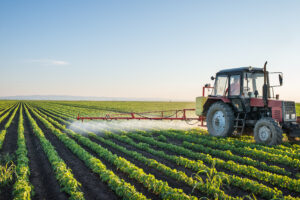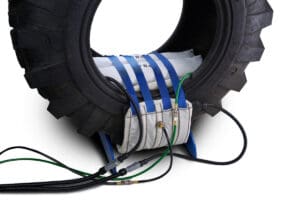Tractor tyre repairs can be a complex topic. There are a huge number of agricultural tyre types and sizes and injuries vary greatly depending on season, region and application.
Here in the UK, there is an increase in sidewall damage during ploughing, or in wet weather, as the tyres get bogged down in the softer ground, and more crown injuries in the summer when the ground is harder.
Some top tips for agricultural tyre management:
The importance of tyre pressure
Many farmers lower their tyre pressure to 10psi or less to get better traction and reduce soil compaction. However it’s crucial to adjust the pressure back up when leaving and traveling on roads at greater than operational speed. Running at too low a pressure causes rapid heat generation and a subsequent increase in shoulder and sidewall splits due to bulging.
Another common problem is load distribution. Tyre pressures need to be adjusted when the rear of the vehicle is carrying a heavy load. Manufacturers often offer a calculator to work out the optimum pressure per axle.
Incorrect pressure increases the stress on tyres and causes uneven wearing, injuries and premature failures. The importance of pressure maintenance is always worth mentioning to customers so that they can avoid repeat injuries.

Cure times
Agricultural tyres are comparatively thin, as such sidewall cures are quick. Conversely, you will often need to use lug fillers to pack out the substantial treads for crown repairs. This adds to your cure time so always allow for the thickest section of tyre within the repair area when calculating the time. Get in touch if you would like help with calculating cure times.
Assess the health of the whole tyre
It is less cost effective to attempt large repairs in an old tyre or one in generally poor condition. Consider the potential value will you ultimately get vs. the repair cost and downtime? It’s worth attempting larger or ambitious repairs in newer tyres.
Look out for damage where the lug meets the tyre surface
 This can be caused by very high torque loading of the lugs on hard surfaces, overloading and or tyre pressures which are below recommended for the application.
This can be caused by very high torque loading of the lugs on hard surfaces, overloading and or tyre pressures which are below recommended for the application.
It’s worth checking the tyres regularly for signs of this sort of external damage. These injuries can be buffed back and repaired easily. These cosmetic repairs will prevent further issues materialising down the tracks.
Check out our range of tyre repair systems for agricultural repairs.
